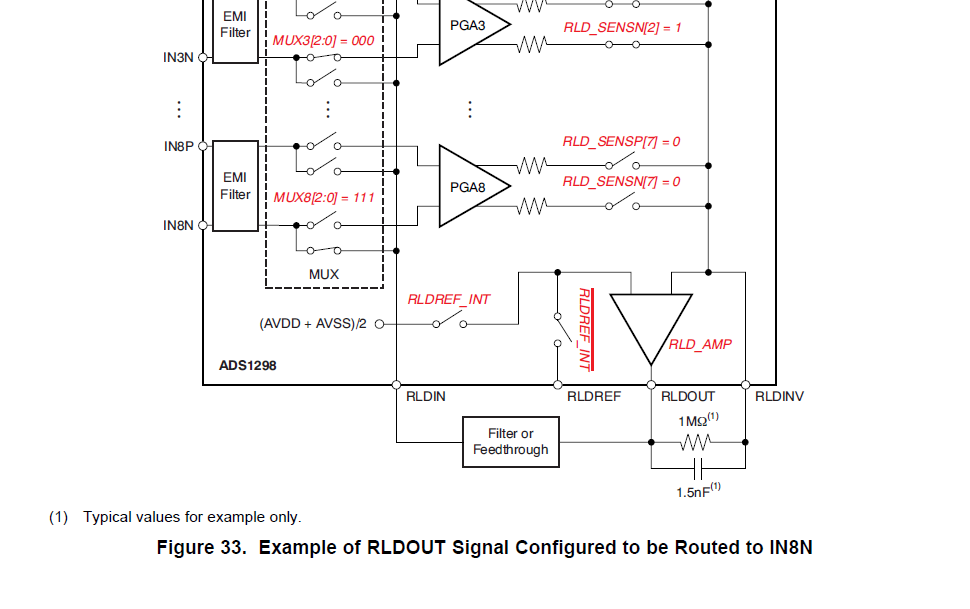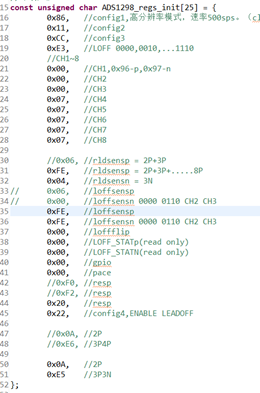For the chest leads of the standard 12 leads connecting, the WCT is used as the negtive input of the PGA.
WCT is the average of LA\RA\LL, and it is used as a relatively stable reference.
And I want to use the average of all the electrodes to replace the WCT.
In the ADS1298 EVM, the RLDOUT is feedthrough to the RLDIN. And I configure the MUXn of register CHnSET to '111 = RLD_DRN (negative electrode is the driver)'
And I configure the RLD_SENSP=0xFE, RLD_SENSN=0x04, which means the RLD=CH2P+CH3P+CH3N+CH4P…+CH8P (the average of all the Electrodes).
Here is the configuration:
I think the above configuration makes the negtive input of the PGA be the average of all the Electrodes.
But the captured data shows only white noise:
Is there any mistake in the above idea?
Thank you.




